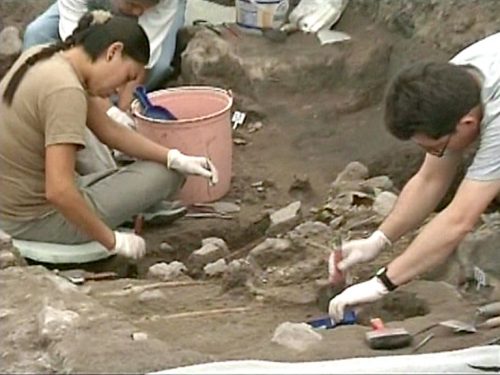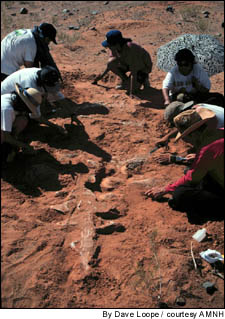Lawn-cutting homeowners go through great pains to keep their lawns in tiptop shape during the summer, keeping them nicely trimmed and watered. But, for some reason, when autumn leaves start to fall, these same homeowners’ thoughts turn to other things. That’s a mistake, because how you care for your autumn lawn determines, to a great extent, its health for the following year.
As far as yardwork is concerned, you can’t just concentrate on raking leaves and planting ‘mums. You have to take specific steps to ensure your lawn’s health over the winter and into the next growing season. To get sound advice on this topic, we consulted Dr. George Hamilton, assistant professor of Turf Grass Science at Penn State University. Hamilton teaches in the university’s Department of Crop and Soil Science, and he works with Lebanon Seaboard, manufacturer of Greenview lawn care products sold at home centers. His advice to homeowners is surprisingly basic, reasonable and easy to understand.
A Grass Root Effort
The most important thing to understand about fall lawn care is that you are taking steps to ensure healthy root development. “A lot of root development occurs in September and continues into the fall,” says Hamilton. So, how you treat your grass at the end of the cutting season increases or decreases the health of the root system.
The first step, says Hamilton, is to increase cutting height to 2 to 3 in. Generally speaking, homeowners often prefer an unrealistically short cutting height of 1-1/2 in. Not only is this too short to sustain good growth, it frequently leads to scalped and damaged areas of the lawn.
By increasing the cut height of each blade of grass, you’re increasing the grass’s photosynthesis surface area. To quickly revisit grade-school science class, photosynthesis is the process by which a plant uses water and sunlight to convert airborne carbon dioxide and soil nutrients into carbohydrates (sugars) that are stored in the root system. “You’re increasing carbohydrate reserves” by increasing the cutting height, Hamilton points out.
Not to belabor the point, but here are a few other things you should be aware of regarding your lawn’s root system. They all regard surface area, because increasing the root system’s surface area provides maximum water and nutrient uptake. The roots also form a mechanical support for each blade of grass, helping it to remain upright and providing a foundation to withstand wear and tear.
Fall Feeding
Lebanon Seaboard, like other manufacturers, makes fertilizers formulated for fall application. Hamilton emphasizes that homeowners should use a fertilizer containing nitrogen that feeds the grass roots over time–through the fall and winter. Here, Lebanon Seaboard has an advantage that some other lawn fertilizer companies lack. It develops and manufactures its own products, so it doesn’t have to rely on the chemical offerings of other manufacturers.
Grass needs nitrogen to flourish. But, Hamilton points out, many fertilizers contain too large a proportion of quick release-type nitrogen. A fertilizer with this formulation quickly turns the lawn a pleasing dark green color, and the grass grows rapidly. But it grows more rapidly than necessary.
Hamilton advises homeowners to look for fertilizers with slow-release nitrogen. Fertilizers that contain IBDU (Isobutylene Di-urea) or Meth-ex–both manufactured by Lebanon Seaboard–are an excellent source of slow-release nitrogen, though both types are expensive, professional-grade nitrogen sources.
Providing your grass with slowly released nitrogen helps it grow more consistently. The turf will have more-vigorous roots and it will store more carbohydrates. This helps it survive winter stresses and bounce back quickly in the spring.
Spring Ahead, Fall Behind
A last word is in order about cutting heights. Although 2 to 3 in. is the right height throughout the summer growing season, for the last cut of the year, Hamilton says, lower your mower to 1-1/2 in. That doesn’t sound logical, given what we’ve just said about increasing the height of each leaf of grass to support root development.
But it turns out that many cool-weather grasses develop mold during the winter months. There are two prime culprits–a gray variety and a pink variety–both of which are known as snow molds. The pink one doesn’t even need snow to flourish. All it needs is cold, damp weather. The gray mold flourishes under the cover of snow. Keeping the grass short until spring allows increased air circulation through the blades of grass. And that results in less mold growth, says Hamilton.
Given this information, it seems that it would be best to hold off with mechanical dethatching until the very end of the season, as opposed to doing it around Labor Day, as many lawn care experts have contended for years. Not so, says Hamilton. Mechanical thatch removal is good for a lawn but its scouring action also subjects each blade of grass to stress. Yet, dethatching just before or after Labor Day–as the experts have long advised–still gives the lawn enough time to recover from the stress that it imposes, he says.
Environmental Stewardship
Hamilton assures us that there’s nothing complex about caring for a typical suburban lawn. All it needs to thrive, he says, is “basic attention.” He claims that the turf industry has not done a very good job of emphasizing the environmental benefits of properly maintained lawns. There’s been a lot of news coverage of wasted fertilizer washing into watersheds, and related topics. But an untold story about lawns, he says, is that maintained lawns are good runoff filters and are efficient at converting carbon dioxide in the air into oxygen, the way trees do.
By removing carbon dioxide from the air, lawns lessen the so-called greenhouse effect. The theory behind the greenhouse effect is that the burning of fossil fuels, wood and vegetable matter is releasing tremendous amounts of heat-holding carbon dioxide into the Earth’s atmosphere, keeping our weather warmer. Lawns, Hamilton points out, “are tremendous carbon sinks.” Like a forest, he says, “their surface area is huge” and so is their ability to remove carbon dioxide from the atmosphere.






